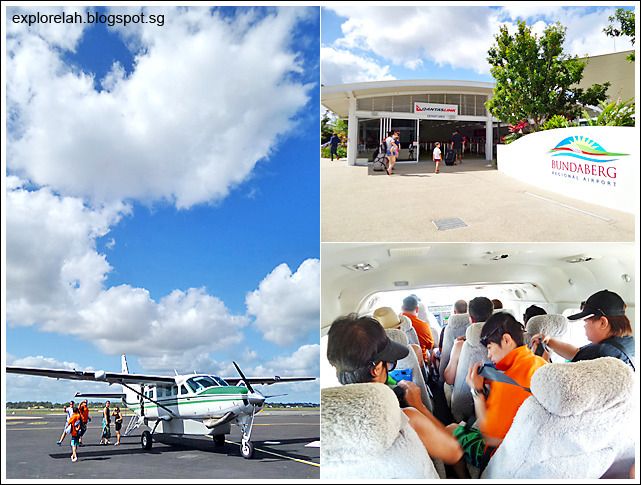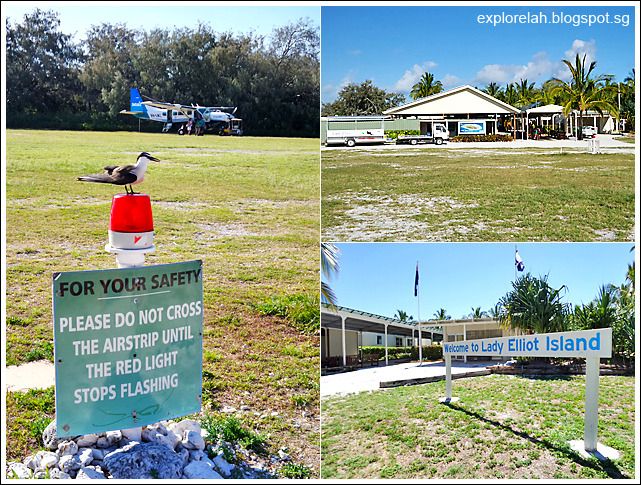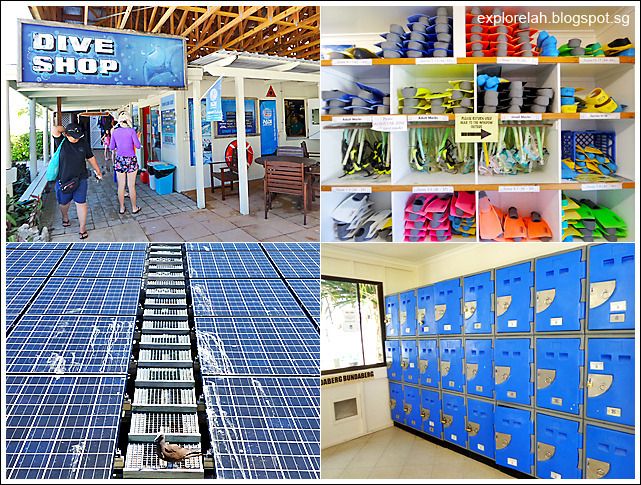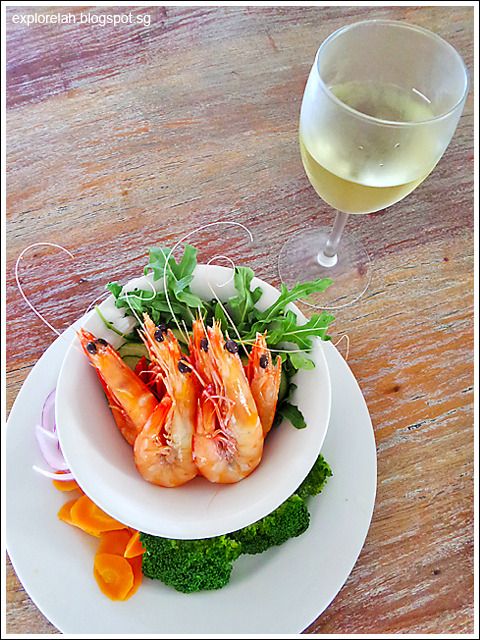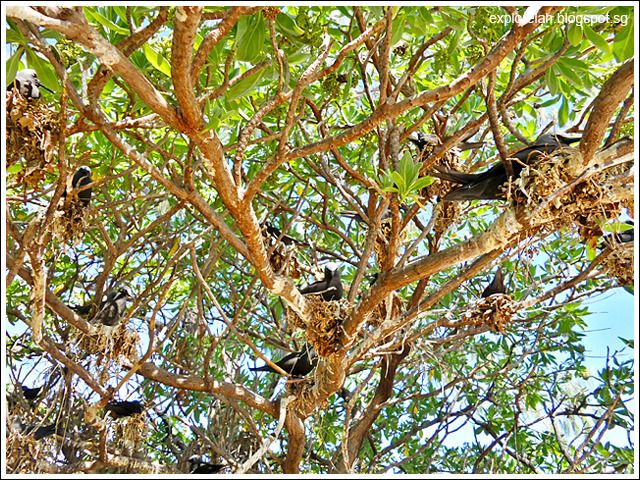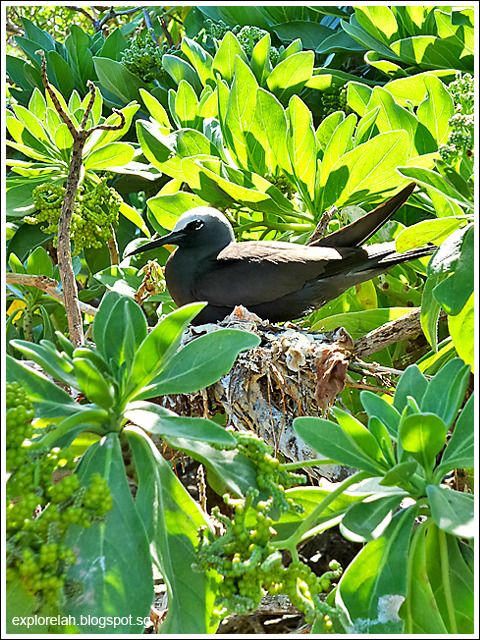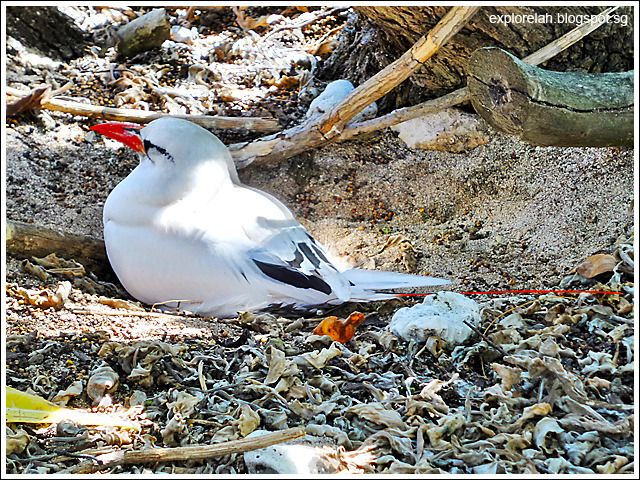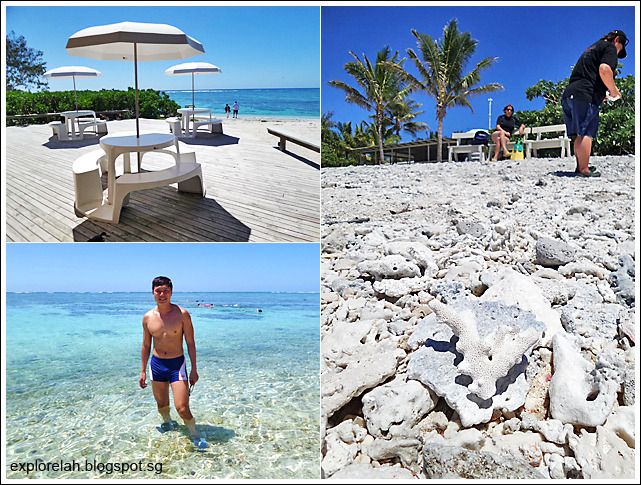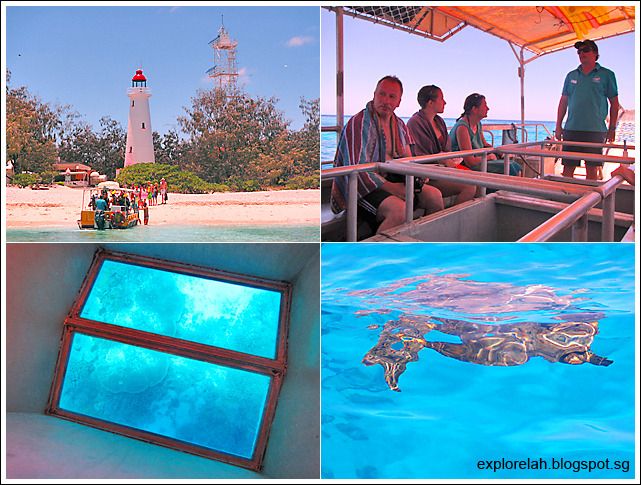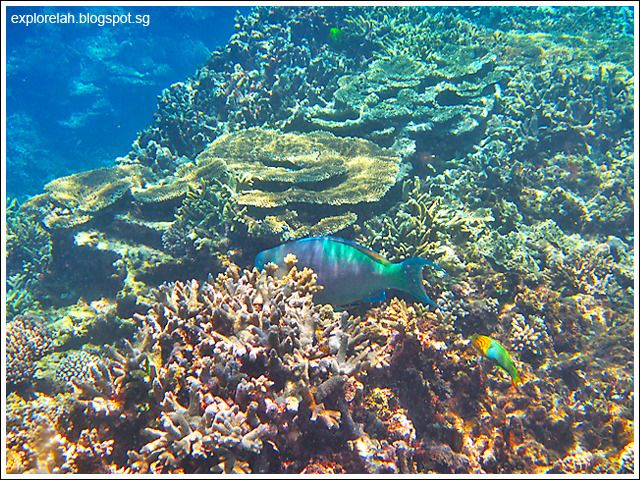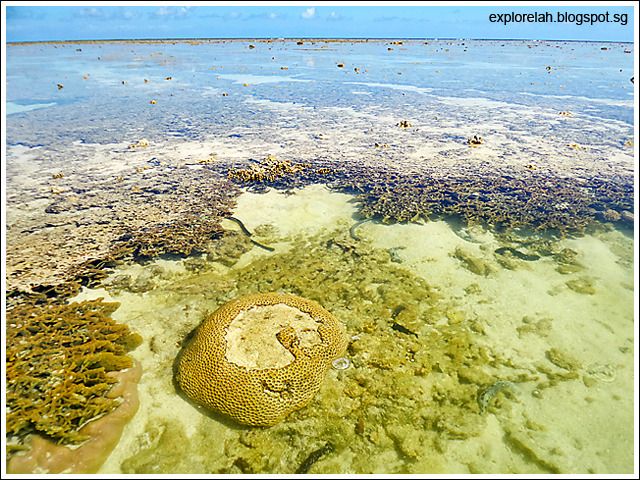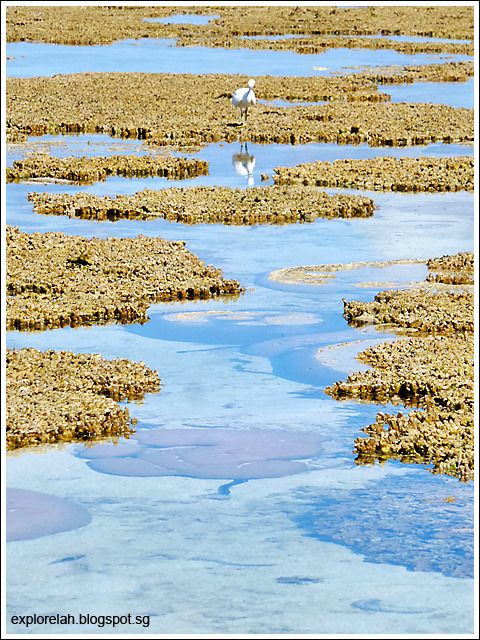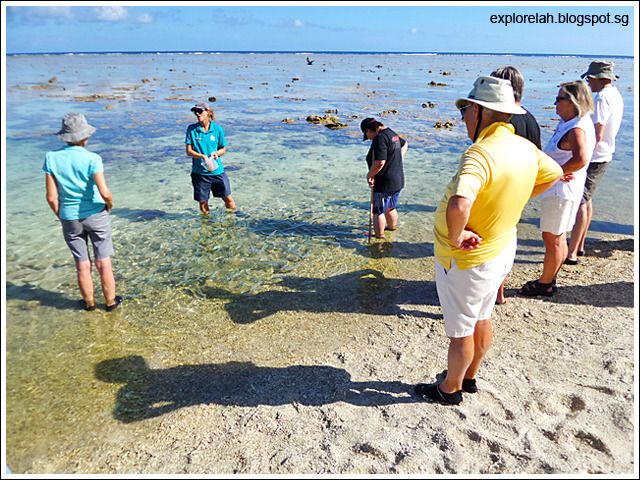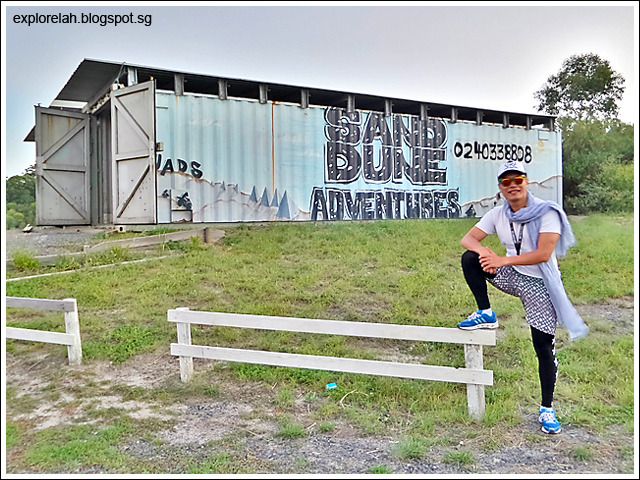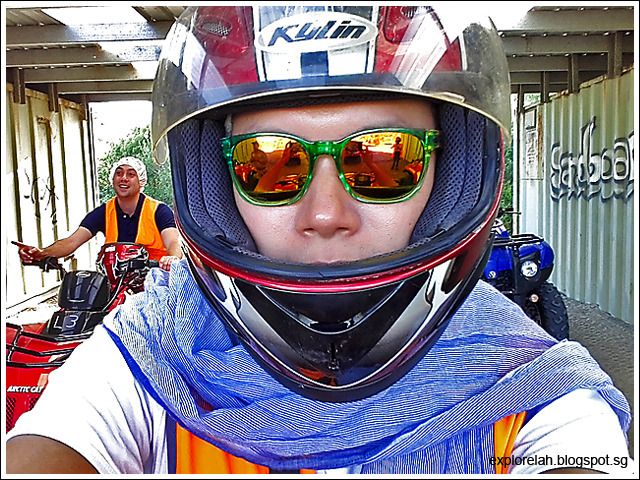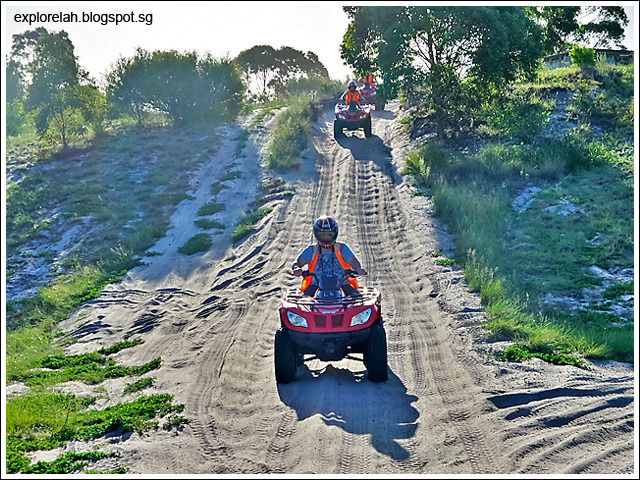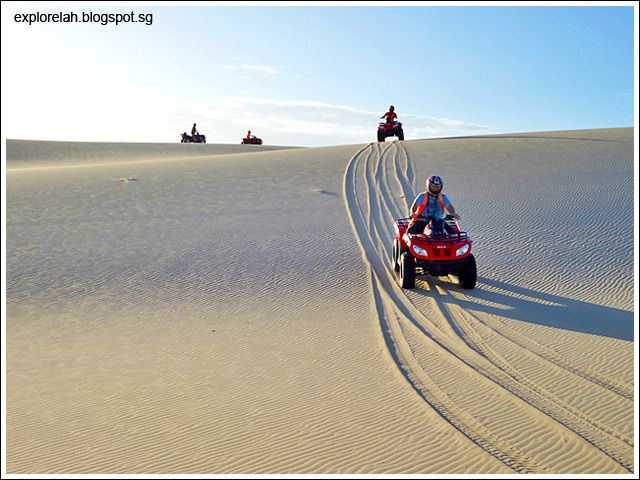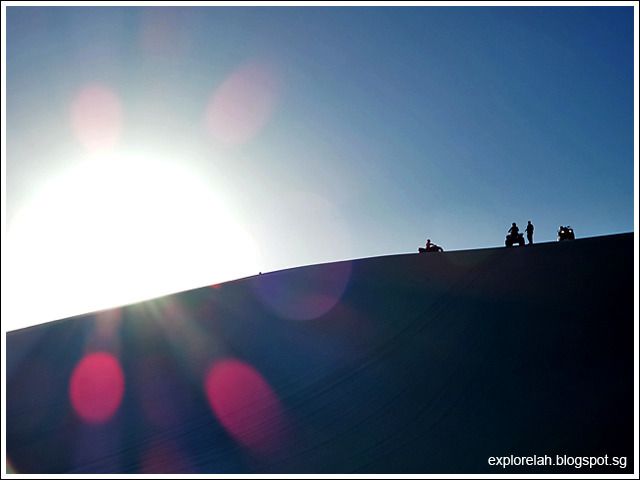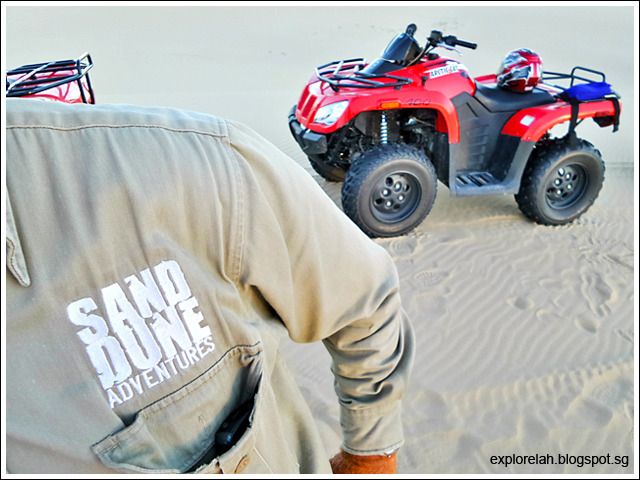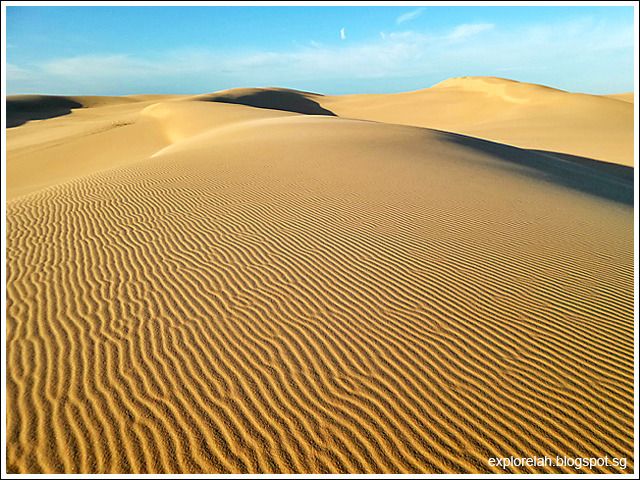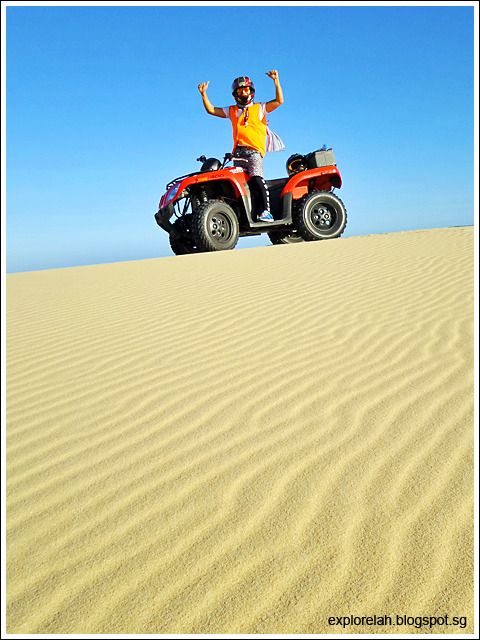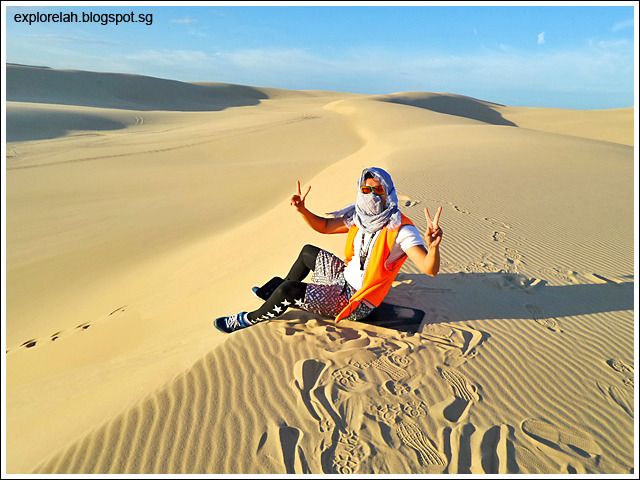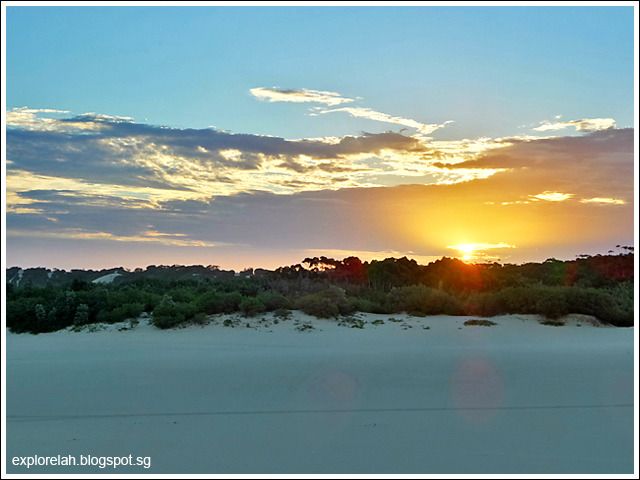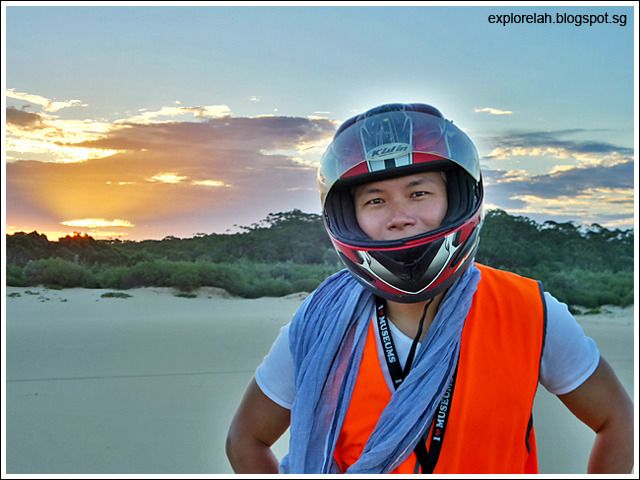When I saw the name "Lady Elliot Island" on my Queensland 4WD itinerary, I suddenly had the urge to sip tea from a fine porcelain teacup with my little pinkie finger up while reading a Jane Austen novel. What a quaint name for an island!
Without looking it up on Google, I imagined Lady Elliot Island to be one of those refine, elegant islandic resorts with luxurious villas and spa pamperings amongst nature that has been trained to obey fences and cages. But that's far from what Lady Elliot really is. She's less Snow White and more Pocahontas where nature is allowed to be nature and amazing underwater encounters make for a magical, fairytale vacation that's bound to be remembered ever after. Well, at least for me coz I got to swim with a hawksbill turtle!
I've seen turtles at other island destinations I've been to but they were always at unreachable depths and blink-and-you-missed-it scenarios. But here at Lady Elliot Island, I got to touch the turtle's shell and we swam almost cheek-to-cheek for a long time! It's a pity I didn't bring an underwater camera to selfie with it. Looking into its eye while we were drifting above a coral garden is a moment I will not forget. It was the crowning encounter of my visit but that's not all, there are more adventures waiting on this island that sits at the Southernmost end of the Great Barrier Reef.
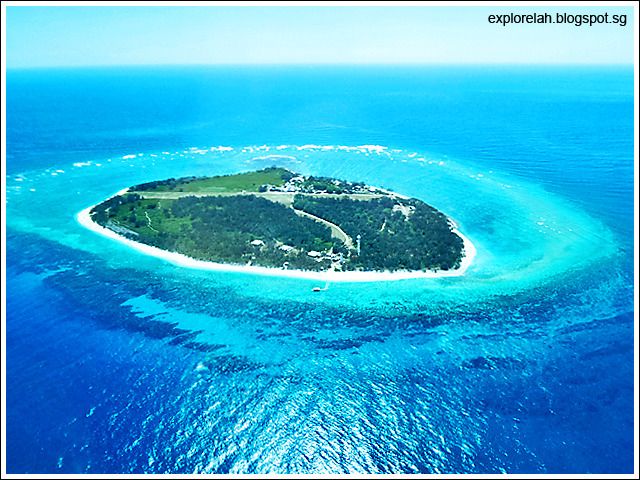 |
| Aerial view of Lady Elliot Island on our flight there... it resembles a giant peace sign from this angle. The strip cutting across the island is a runway for planes to land and takeoff. |
While continental islands have white or brown sand (eg. Singapore and many places around the world) and oceanic islands usually contain black sand from eroded basalt or lava (such as Hawaii), Lady Elliot Island's coastline is made entirely out of coral fragments. I think of the island as a bank account of Hai Long Wang (海龙王) where he deposits his coral dollars.
Getting to Lady Elliot Island
You can visit Lady Elliot Island as a day trip or stay overnight and the only way to get there for tourists is to fly. Lady Elliot Island Eco Resort offers day trips or stay packages and you can fly from either Bundaberg (approx. 30mins), Hervey Bay (40mins), Brisbane (80mins) or Gold Coast (100mins).
Ours was a day trip package costing A$355 (per adult) departing from Bundaberg. The package includes return plane transfers, buffet lunch, glass bottom boat ride, equipments rental and snorkeling. The price tag is a bit steep for a day trip but considering that in Maldives, the cost of just a 45-minutes return seaplane ride from Male to an island atoll costs US$300, what Lady Elliot Island charges seem reasonable.
Letting Nature Be Nature
Developed for tourism since 1969, Lady Elliot Island is an exceptional model for ecotourism with a philosophy grounded in the harmonious co-existence between nature and tourism. Developments are kept to the minimum and there are various eco-friendly practices and features such as pre-fabrication of building components so that they can be assembled on the island to minimise onsite construction, the use of solar power to cut down on carbon footprints, seawater desalination for drinking, and recycling of waste.
To witness the fruit of this dedication to ecotourism, one just needs to look up in the air... where thousands of sea birds are seen darting and gliding across the sky and nesting everywhere! It's like stepping into an open-air aviary. Or walking onto a bird orgy. It was nesting season during our visit and it's great to see that human presence hasn't scared them away. Anyhoo, more about the birds later. Here's a look at the hospitality features on the island...
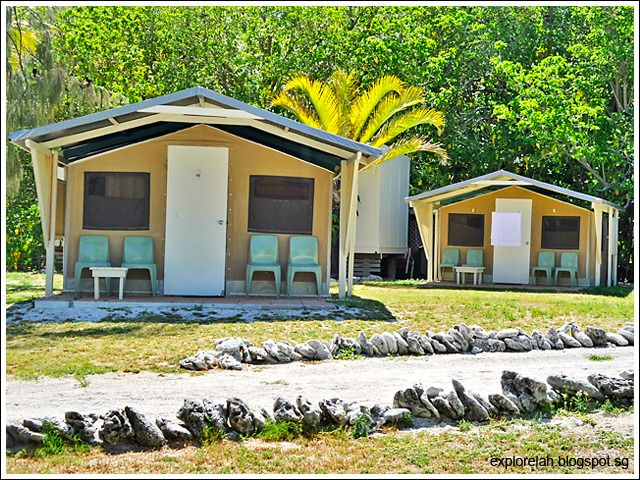 |
| If you want to stay a night or two, lodgings are available on Lady Elliot Island either in these camper style Eco Cabin... |
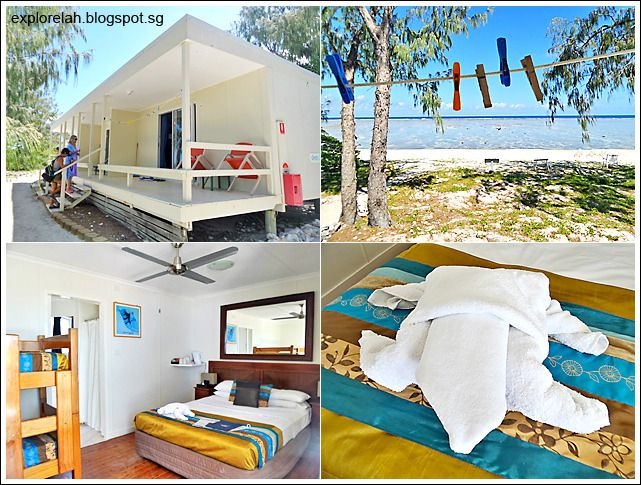 |
| ... or the beachfront or garden suites. |
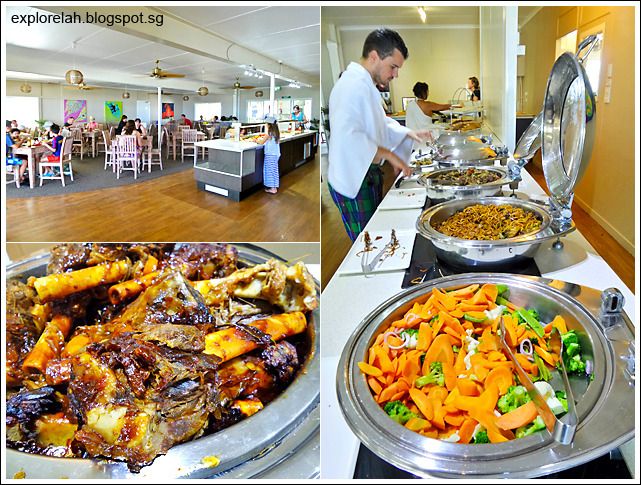 |
| Included in the day trip package too is a buffet lunch that's yummers. The lamb shank would have you going back for seconds. |
An Orgy of Feathers
September to March every year is nesting season and hordes, not flocks, of birds descend on Lady Elliot Island to breed the next generation. I've not seen so many wild birds all over the place in my life. It was truly astounding to see countless birds and chicks flying around, up in the trees, hiding between shrubs and loitering the island grounds.
But having that many birds posed a problem. Some parts of the island have a funky smell due to the birds' poo. It took some getting used but hey, this is real nature after all and the birds are here first.
Lady Elliot Island didn't use to get so many breeders as being a coral cay, the island was practically devoid of nutrients necessary for plants to grow. However, as more birds came to the island to breed, their poo (known as guano) acted as fertilisers and plant seeds, also in their wastes, began to sprout. Then in 1969, an extensive re-vegetation program on the island created a haven for the wild birds and Lady Elliot Island began attracting up to 95 different species of land, sea and shore birds. Today, the island has the second highest number of bird species along the Great Barrier Reef belt.
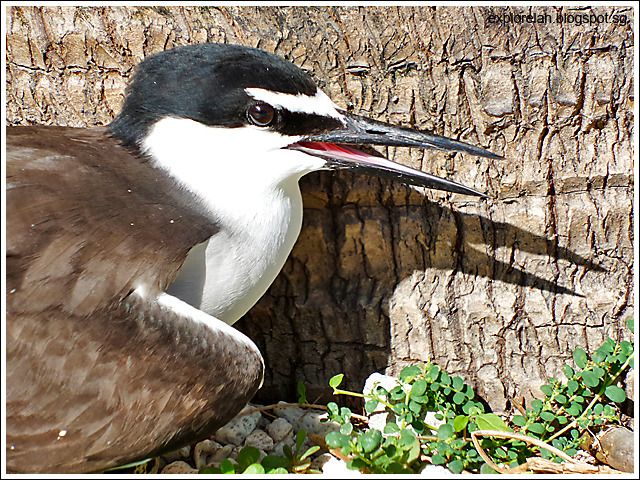 |
| Got upclose with a Bridled Tern that began to let out a yap that sounded like a dog, which earned it the nickname "Dog Tern". Try listening to one if you get the chance. |
Glee Under the Sea
Being at the Southernmost point of the world's largest coral reef system, the Great Barrier Reef (GBR), Lady Elliot Island is an extended home to a staggering 1,500 species of marine life identified along the GBR belt. Fish families you can see here include damselfish (such as Nemo!, humbugs and sergeants), parrotfish, surgeonfish (Dory from Finding Nemo!, triggerfish, butterflyfish, cods, groupers, snappers, eels and lots more.
Manta Rays are also a regular in the waters of Lady Elliot Island with large numbers congregating during mid-May to mid-August. Whales are also sometimes sighted nearby, making the island a hotspot to meet these magnificent sea creatures. While it may take some luck and careful calculations to coincide with a manta ray or whale sighting, it's almost a guarantee to see turtles at Lady Elliot Island. Three different species of turtles can be seen here - Hawksbill, Loggerhead and Green.
When I was told I can see turtles here, I wasn't actually very excited because from previous experiences, they are usually very far away, just a speck in the distant sea or deep down nibbling along a coral hill. Then my encounter at Lady Elliot Island changed all that.
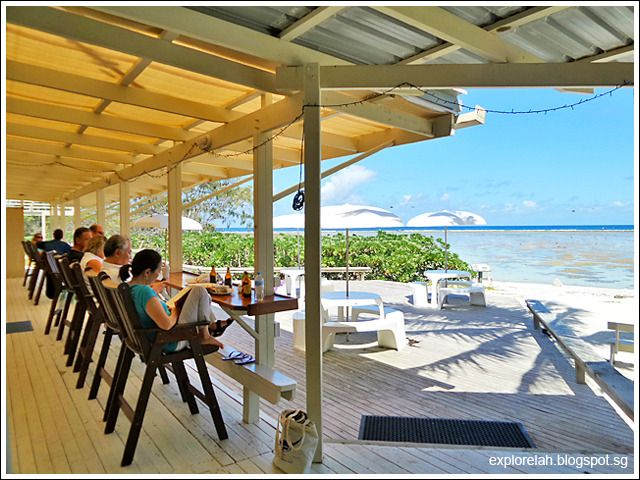 |
| Chilling by the beach is one way to enjoy the island or you could grab a snorkel mask and flippers to meet the island's coastal residents. |
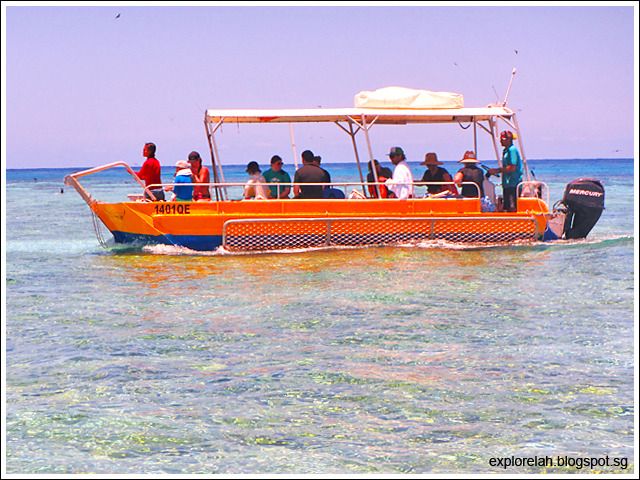 |
| A glass bottom boat took us out to sea to snorkel the rich colours of the corals and fish in the deeper water. But my heart remained with the juvenile Hawksbill Turtle I saw earlier. |
Intertidal Walk
As the day wears on, the waters begin to recede and a different seascape emerges. The crystalline blue retreats to unveil a labyrinth of hard and soft corals as well as colourful crabs, sea stars, shellfish and fishlets darting in the shallow pool. The next attraction on Lady Elliot Island has revealed itself... a low tide exploration of the island's coast.
 |
| Staghorn corals poking their nodules above water along with a massive estate of 'condominiums' for minute sea creatures appear when the tide retires. |
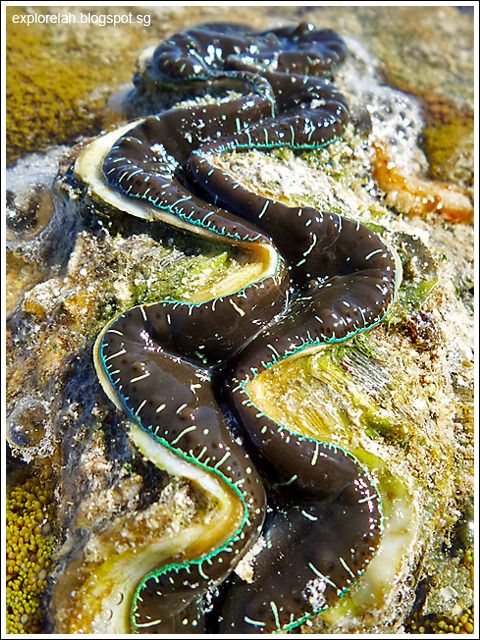 |
| A boring clam close-up. It's called a 'boring clam' not because it doesn't know how to have fun but because it bores (burrows) into rocks or the seabed. |
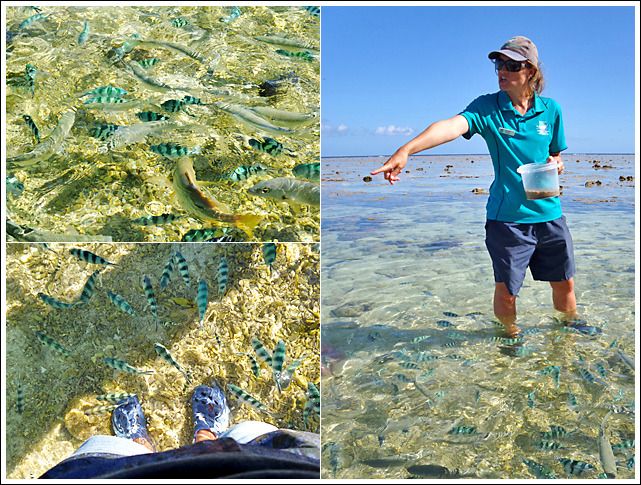 |
| Countless feeders turned up for the free meal and it's kinda fun to watch them milling around the feet. Most of them are striped wrasses but occasionally, a colourful parrotfish or two will join in. |
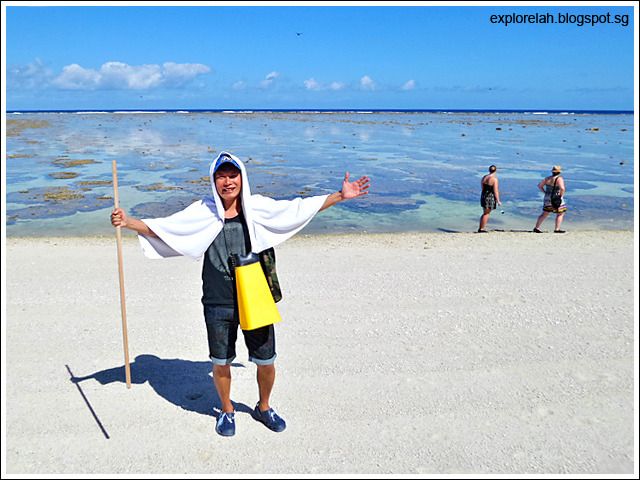 |
| Does this remind you of Moses during the parting of the Red Sea. LOL. It's been good fun on Lady Elliot Island :o) |
Our day trip ended with the intertidal walk before washing up and changing into dry clothes in the island's public shower huts and flying back to Bundaberg. The great thing about visiting Lady Elliot Island is that because of its small size, all the activity hotspots are very close by so there's no need to trek a long way between them.
With lots of birds, fish and corals to see, good food and of course, that rare opportunity to swim upclose to a turtle in the wild, Lady Elliot Island is experiencing the best of the Great Barrier Reef in a nutshell. Or should I say clam shell?
This post has been made possible by Tourism Queensland Singapore and CTC Travel.
